Eurail Passes are famous as a way to save money while exploring Europe, but they are also confusing and often misunderstood. They are still an amazing money-saving tool for certain types of travelers, and not a wise idea for most others. Before Europe introduced dynamic rail pricing (like airfares, where the price varies depending on when you buy it), a Eurail Pass was an easy way to save money since all tickets had fixed prices that were generally fairly expensive. These days most travelers can save far more money just by buying their train tickets at least a few weeks in advance.
That said, Eurail Passes are still great for longer trips and especially for people who like to make plans as they go. Dynamic rail pricing made advanced tickets much cheaper, but it also made last-minute tickets MUCH more expensive. Below we will discuss Eurail Passes and whether they are a good idea for your trip or not.
Disclosure: This is a reader-supported website and some of the links are affiliate links where a small commission is paid to help keep this site going.
Note: This article was written in 2012 and has been continuously updated since then, so all information is current as of April, 2024.
Eurail 2024 changes: New countries and a mobile version
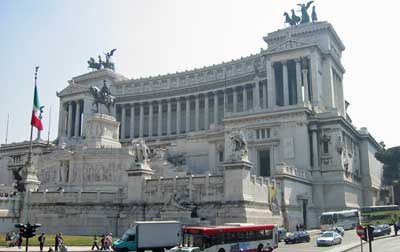
Aside from that it’s just the normal fact that they have updated the timetables as of December 2023 and have a few promotions going on, but those usually don’t happen over the busy summer season.
Eurail passes are now available in a mobile version
Until very recently, Eurail Passes were only available in paper form and they were quite confusing at first. You’d get a pass with a series of empty boxes on it and you’d need to enter your trip before you’d use your pass each day and then have the first conductor verify it. If you lost your ticket (and this was not uncommon), it was a whole ordeal to attempt to get a replacement.
Again in 2024 Eurail offers a fully mobile version that is delivered instantly to your mobile device with no delivery fee. And if you somehow lose your phone, you can resume using your Pass on your replacement with no extra headache. This is MUCH more convenient in every way and as long as you can keep track of your phone you’ll always have your train pass handy.
If your trip will be 2 weeks or less, a Eurail Pass probably won't be worth it
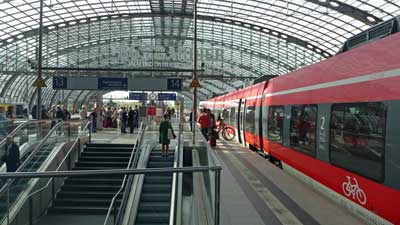
Eurail Passes are ideal for travelers on longer trips, and especially those who don’t want to plan all of their destinations and dates far in advance. If you have your itinerary pretty much planned out and you don’t require much flexibility, you’ll be far better off just locking in your dates and buying your train tickets as early as you can. Again, they can be surprisingly cheap if you buy 2 to 4 months out.
If you are age 27 or younger, a Eurail Pass is probably worth it

With this in mind, if you are lucky enough to still be 27 or younger, you should seriously think about getting a Eurail Global Pass Youth, partly because the sense of freedom instantly gets more expensive at age 28. The age cutoff was 25 until recently, so this change is a great deal for anyone who will be 26 or 27 at the start of their trip.
You aren’t guaranteed to save money by buying a Youth Eurail Pass, but chances are good that you WILL save money and you’ll definitely save a lot of hassle as well. Especially now that Eurail Passes come in a mobile form, it’s even that much more convenient to just hop aboard any train that is about to leave the station and not worry about buying or even having a ticket. Especially for young people, it can be really fun and exhilarating to literally just walk into a train station with your backpack and look at the departure board and then decide where to go at that moment.
If you are age 60 or over, a Eurail Pass could also be great value
Another fairly recent change is that anyone who is 60 years or older at the start of the use of a Eurail Pass now gets 10% off the normal adult fare. That new discount is going to make this a great value for many travelers who might have been on the fence about buying a full-price pass before.
>>>Check prices on Eurail Passes
If you are planning on traveling in 1st Class anyway, a Eurail Pass is probably worth it
Most 2nd Class trains provide similar comfort and legroom to Business Class airline seats, or at least close enough, so for most people it’s not worth the added expense for 1st Class. However, if you are rich or elderly or fear contact with strangers, a 1st Class Eurail Pass is probably worth it no matter what.
Not only do you get much more comfort and legroom in 1st Class, with only 3 seats across instead of 4, but there is another advantage to 1st Class on European trains. Since it’s mostly business travelers and wealthy people traveling in 1st Class, the carriages are almost always mostly empty except in the mornings and late afternoons between large cities. In 2nd Class the only available seats might be two seats in an 8-seat cabin with all the other seats taken up by a loud family or a group of rowdy friends. In 1st Class you are all but guaranteed a peaceful ride, and usually plenty of empty seats from which to choose.
A hidden Eurail Pass benefit: Making extra stops on travel days for free
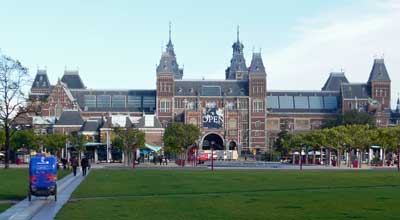
Brussels in particular is one I recommend a short stop in because the small historic center around what they called the Grand Place is amazing and gorgeous, while the rest of the city is rather boring by European standards. With a Eurail Pass you can jump off the train in Brussels and explore the city center for a few hours (luggage storage is cheap and easy) and maybe have lunch, and then hop on a later train to complete your journey to Amsterdam. There are opportunities like this on many if not most trips between larger cities, and if you buy the point-to-point tickets you have to stay on the train you booked.
Another example is the high-speed train between Barcelona and Madrid, which takes about 2.5 to 3 hours in each direction. There are some interesting cities in between, but in this case you could take a morning train from Barcelona to Madrid and then check into your accommodation, and then hop on another train from Madrid to Toledo, which takes about 30 minutes and costs €14 each way. Toledo is a historic and fascinating town, but it’s also pretty small and you can explore the main sights in an afternoon. With a Flexi Eurail Pass where you buy a certain number of travel days, you can save more money by adding on these sorts of nearby stops on travel days.
If you'll be touring major cities within ONE country, a single-country pass might be perfect, and Second Class passes are available for all ages
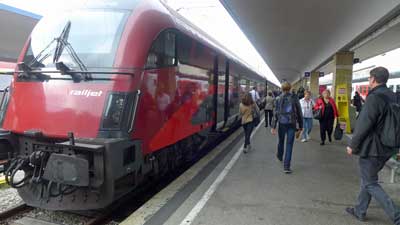
Single-country passes are still available and they MIGHT be good value for you, but it depends on which country and how much traveling you’ll be doing. If you plan on going all over a larger country such as Germany, France, or Spain, and especially if you like to make plans as you go, a Single-country pass for one of those might be your best deal. On the other hand, smaller countries (such as the Netherlands) or countries where train tickets are already fairly cheap (such as Italy) might be harder to get value out of. Long story short, for single-country passes you really need to check fares of the places you plan on going and see how they add up compared to the pass.
>>>Check prices for Single Country Passes
Eurostar (between London and Paris or Brussels or Amsterdam) tickets are now included for Eurail Pass holders for a €30 reservation fee
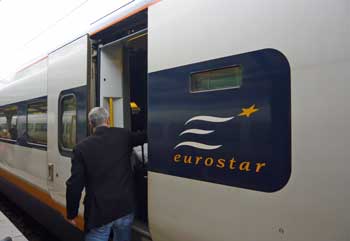
Our recent tests show that Eurostar fares one-way from London to Paris can be as low as €49 if you book about 3 months out, or as expensive as €214 for the same seat if you wait until the day of travel to buy. Round-trip/return tickets can be even cheaper if there is a promotion running.
>>>Check Eurostar prices
If you are on a really low budget, a Eurail Pass isn't a good idea
Here’s the thing. As we’ll discuss below, there are many potential benefits to Eurail Passes, and they will often save you money, but they do cost a lot and they only really save you money when traveling in the more expensive countries.
So let’s say you have a flight to Rome and then US$2,000 to last you a month after you arrive. Buying a Eurail Pass before you go would help you see a lot in that month, but you’d practically need to sleep in parks for your funds to last the whole time. You’d be better off moving slowly in the southern countries, or just in Italy itself, as a way to have the best holiday on your budget. You might also be tempted to use a Eurail Pass mostly on night trains so you can save the cost of a hotel or hostel, but those aren’t ideal for most of us.
The cheapest way to get around Europe by rail is to buy all train tickets online at least a couple months in advance. The fares are low, but they are non-refundable and non-changeable. See how far in advance you should buy train tickets to get those attractive fares.
If more than a little of your travel will be in eastern Europe, a Eurail Pass isn't a good idea
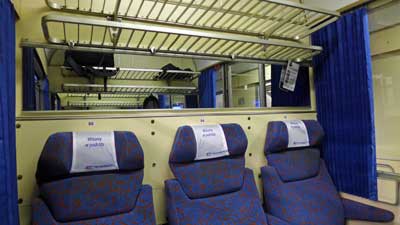
The good news is that the trains operating in this region, and the buses that operate alongside and/or where trains aren’t running, are quite cheap. So if any significant part of your trip will be into this region, a rail pass doesn’t make sense.
Basic types of Eurail Passes
Long gone are the days of the simple options, replaced by specialized passes that are meant to appeal to different styles. It should be pretty easy to figure out which is best for you, and then keep going down the page to decide if it’s worth it at all.
Eurail Global Pass – 4,5, or 7 days within 1 month or 10 days within 2 months
Until recently the minimum number of travel days with 10 days within 2 months, but now you can buy as few as 4 days within 1 month for about €200 to €250 (for first class). This can actually be an interesting strategy if you are planning many shorter and cheaper trips (like within Italy or Eastern Europe), and also 4 or 5 longer trips such as Berlin to Amsterdam. This way you can buy only 4 or 5 travel days and only use them for your most expensive travel days, and just pay as you go or buy cheap advance tickets for your other journeys.
Eurail Global Pass – 15 to 90 consecutive days
This variation allows for unlimited travel on the system for between 15 and 90 total days. They are really only a good idea for people who are certain they are going to travel very often, with much of it being in the north of Europe. The problem with them is that if you really try to get your money’s worth, you will probably ruin your trip by spending too much time on trains in general. On the other hand, if you will be in Europe for 2 or 3 months and plan on traveling around a lot, you can get a LOT of use out of a longer pass. The 3-month pass is around €900 so it’s literally about €10 per day. Imagine going back and forth between Berlin and Munich or Barcelona and Madrid for €10 per day!
One Country Pass
Obviously these are for travel within one country only. Again, they can be great deals if you plan on extensively moving around one particular country.
Where to buy your Eurail Pass
Eurail Passes are cheapest and easiest to buy online, primarily from two main sources which offer all the same products at the exact same prices:
This is a reliable company based in the Netherlands but with fulfillment offices in the US and Ireland. Price of Travel is a partner with this company, and if you use the links of this site we earn a small commission to help keep this site online. Eurail.com is usually cheaper than RailEurope (discussed below) by the way.
They were founded in the 1930s and are based in New York, but owned primarily by the French and Swiss rail companies. They offer free shipping (2 to 3 business days) on all orders of US$399 or more, although now that a mobile version is available, this is meaningless. Price of Travel is a partner with this company, and if you use the links of this site we earn a small commission to help keep this site online.
Reservations on European trains for rail pass holders
For most of the fastest trains between major cities you’ll need to reserve a seat even with a rail pass. It can usually be done just before you leave and the cost is usually around €5. Here’s a full list of which European trains require reservations and which don’t.
Reservations are required on all intercity (longer distance) trains in or involving France, Spain, Switzerland, and Italy. For most trains in Germany, Austria, Netherlands, Belgium, and most of eastern Europe, you can usually find trains that don’t require seat reservations. Often, if you don’t leave until after 9:30am or so, you can ride on any train with no seat reservation, but you have to research each leg to be sure.
How to determine which trains require seat reservations, and also get schedules
You can click on the link just above this section for a list of countries and their seat-reservation policies, but in some cases it’s actually a bit more complicated than that. For example, you can generally ride without a seat reservation on fast ICE (Inter City Express) trains in Germany if you depart after 09:30 in the morning. They do this to free up seats for business travelers who pay full fare, and they don’t mind filling up seats with rail pass holders on trains leaving a bit later.
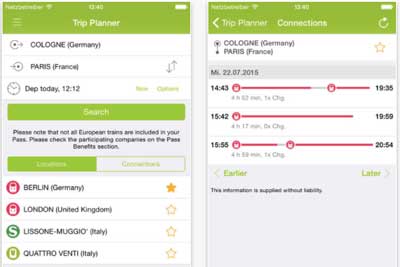
Night trains in Europe are making a comeback
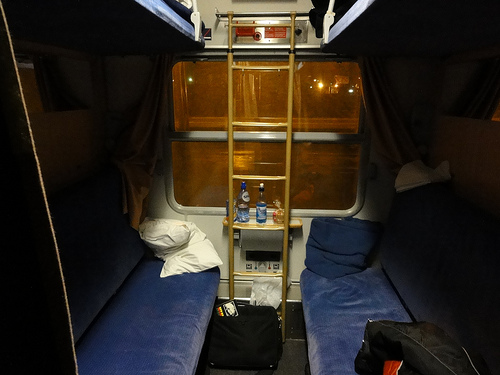
Fast forward to 2024 and night trains are not only expanding service, but they are very trendy. Some of it is nostalgia for the older way of getting around, but most of it is for environmental purposes combined with European hatred for the “low cost airline” experience with RyanAir and Easy Jet etc.
Personally I’m still not a fan of night trains because I find it difficult to sleep on them since they often get decoupled at interim stations in the middle of the night and then coupled onto other trains coming from other places, and I can’t sleep through any of that. But still, they are worth looking into and they are fun to try at least once.
A bit of warning that they tend not to be cheap and even if you have a Eurail Pass you’ll almost certainly want to book a sleeping cabin with a bunk or couchette, and that will come at an extra fee. On the other hand, if you are the sort of person who can sleep sitting upright in a normal seat, then that won’t cost any extra on most overnight trains.
Factors to consider when thinking about any Eurail Pass
Assuming you know which Eurail Saver Pass option is the best one for your type of trip by now, we’ll go over the main factors that should help you decide whether it’s the best idea for you.
Eurail Passes are best for standard ‘medium length’ journeys
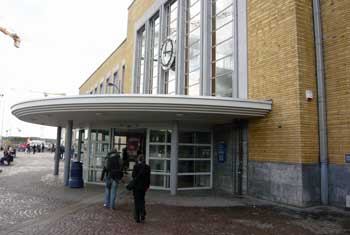
However, if you are determined to travel between Rome and Paris, it’s about a 14-hour journey that will almost certainly be overnight. In this case, a cheap plane ticket is probably better, although taking shorter hops on the train is even better, so spend a day or two in Milan or Lyon on the way instead.
And of course, if you prefer to stop in various small towns between the big ones, then a Eurail Pass won’t pay off, except for the traditional kind for unlimited travel in a given period.
Eurail Passes are better value in northern Europe, France, and Spain, and poor value in Italy
Once you do a bit of research you’ll quickly learn that train tickets (and almost everything else) are much more expensive in Germany, Netherlands, Denmark, Sweden, Norway, and Finland than they are in Greece, Italy, Portugal, and Spain. With this in mind, the regional passes can make sense if you are spending time in the south, but the Global Passes almost certainly won’t. Train tickets in Spain used to be fairly cheap, but in recent years they’ve added new high-speed trains between the major cities, and these are quite expensive.
Unlike most other countries, Italy really subsidizes its train tickets so they are quite reasonable even on travel day, and very cheap if you buy a month or more in advance. For example, you can go between Rome and Florence for around €49 if you buy on travel day, and as little as €19 if you buy well in advance. In most other countries, fares are double or triple that much for similar rides.
So consider your planned itinerary. If more than half of it is in the Mediterranean countries then look into a Regional Pass or just buy tickets as you go, because they tend to be pretty cheap. But if you are planning on spending at least half your time in Paris and places to the north of it, then a Eurail Pass is probably a money saver because those tickets are expensive.
Trains are almost always better than planes
Flying sucks, even in Europe
Until you’ve experienced the joy of traveling around Europe by train you might be tempted to “maximize” your time by flying low-cost airlines between each city. This would be a mistake. In order to get truly cheap airfares you have to purchase long in advance, buying non-refundable tickets. You might also have to commit to flights in the very early morning or in the late evening, because cheap tickets on convenient flights sell out quickly.
And again, most European airports are around an hour outside of the city. They are often on the main train lines, which helps, but still you have to deal with the madness of security and also try to get there at least two hours early. From one city center to any other city center it’s about 5 hours minimum, even if they are close, and those are pretty miserable hours.
Train travel is a positive experience

Not only are all the seats comfortable on trains, but you also have an interesting view most of the time. Better still, trains deposit you in the heart of every city, which is usually the neighborhood with the cheapest hotels and food. It’s a wonderful feeling to step off a relaxing train ride, buy a hot dog or sandwich at a local shop, and then be in your hotel room only about 10 minutes later.
Eurail Passes are better than train tickets alone
As someone who enjoys the process of crunching numbers and looking for value, I have to also mention that I’d buy a Eurail Pass even if it seemed like it would cost a bit more than the individual tickets. With a pass you get an extra element of freedom that is worth a lot more than you might expect until you’ve used one.
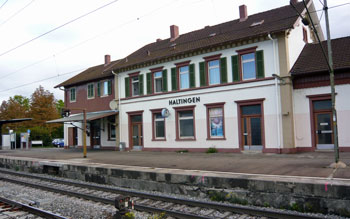
Let’s say you are heading from Amsterdam to Hamburg tomorrow morning. The 09:00 train you planned for might seem a bit ambitious after a long night out, so you can instead opt for the 10:00 or 11:00 train. As long as you walk into Centraal Station 10 or so minutes before departure, you are on. If you are flying you can’t change your ticket, and if you are buying train tickets as you go you have to be in line at the international desk at the train station at least 30 minutes early, and even then you might miss it if they are busy.
Freedom and getting to feel like a big shot
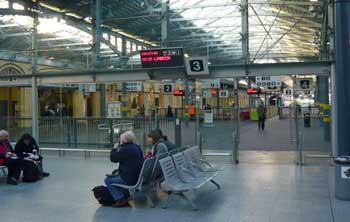
Let’s say you are staying at a hostel in Brussels, and two groups of new friends suggest that you go along with them to their next stops. One group is going to Bruges, which is a short and cheap journey, so you can join them by buying individual tickets (unless you have the unlimited pass, making it free). Then you restart your trip from Bruges, on to your next destination. The other group is headed to Berlin on a night train, which is long and expensive, but with a Eurail Pass you don’t even have to think about the cost. On you go, just like a rich person.
Buying a Eurail Pass is great for those who might run out of money
We all know people who keep meticulous track of every penny they spend, and who are always putting money away for a rainy day. And we all know people who can take a US$100 “entertainment fund” and burn through almost all of it in just a few hours. For the first type of person, a Eurail Pass can help you keep track of expenses, but it’s really the second type of person these are best for.
It’s sad to hear about people who have big plans to see their dream destinations, but they run out of money for transportation halfway into the trip, so they have to just stay put until they fly home. It happens. Locking in your major transportation costs before you leave home, and probably saving money in the process, is a wise move for anyone who isn’t as disciplined as they’d like with their money.
>>>Check prices on Eurail Passes
Bottom line: If you want to keep travel costs down, your choices will usually be a Eurail Pass or buying tickets at least a month or more early
In the last few years, almost every long-distance train ride in Europe has switched to a pricing system similar to low-cost airlines. In other words, tickets go on sale 2 to 6 months ahead of time at very low prices, and they keep getting more expensive as the train fills up and the date approaches. For most trips where a rail pass is possible, this is how things stack up:
Cheapest possible way: Buy advanced (non-refundable, non-changeable) train tickets at least 30 days in advance
Next cheapest way: Buy a Eurail Pass and make seat reservations as you go, usually only a day or less in advance.
Most expensive way: Buy train tickets as you go, or less than a week in advance.
Thinking about it this way should make the choice a bit easier. If you are the type who likes to plan each day and travel segment long before you even leave home, then buy tickets online for the best prices. This can be the best strategy for most shorter trips (10 days or less) because you simply don’t have enough time to change many things as you go anyway.
Buying a Eurail Pass won’t be quite as cheap, but you are buying a LOT of flexibility with the extra money. If you dream of making up your plans as you go, or even making up your plans just a few days in advance, this is almost always your best bet.
But if you wait too long, and just show up looking to buy train tickets as you go, they are going to cost a fortune. As recently as only a few years ago all seats would be the same price on many rail systems, so you could always just wing it. When each country computerized its rail systems so they can sell advanced tickets cheaper, they also had to keep track of seat reservations, so the whole pricing structure had changed to favor advanced ticket buyers and rail pass holders over those who’d prefer to just hop on any train as it is leaving the station.
Have a rail pass or itinerary question of your own?
It wasn’t planned but scores of people began asking me rail pass and itinerary questions at the bottom of this article and a few others. I’m happy to keep answering them and now I’m trying to organize them better as well so they are easier for other people to find.
If you have a question about specific types of European rail passes, please ask it in the comments below.
But if you have a question more about a European itinerary or other non-rail-pass questions, please click over to the European itineraries Q & A article and ask in the comments of that one.

Hi Roger
I’ve only just discovered your website. My friend and myself are planning to travel to the UK and Europe including from Paris to Barcelona from 1 August this year. We bought a Select Saver Pass and I booked my seat for Paris to Barcelona as soon as it became available but my friend did not so as a result can’t get onto the same train as me due to there being none available. I have sent an enquiry to Rail Europe to find out if we can cancel the Select Saver Pass (paying penalties, of course) and buy 2 separate Select Passes. Do you think this is the best way to go? We will be travelling to the South of France after Barcelona and then onto Geneva before ending up in Paris from where we will fly home to Australia.
Terri,
I can understand how that would be frustrating. Unfortunately, I have no special insight as to how Rail Europe could handle this. One major complication is that 1-August might be the single busiest train travel day of the year in France. I just checked on the Spain Rail website and they are offering tickets at close to €200 one way from Paris to Barcelona on that day. France also has a quota on the number of rail pass passengers on each train, and I’m sure those are long gone for that day, so even if you had 2 Select Passes your friend might have to go a couple days earlier or later just to get a spot. Good luck with this, and sorry I can’t help. -Roger
Thanks Roger I have spoken to Eurail (where I actually bough the pass) and their advice is to purchase separate passes now then provide them with the order numbers. They will then refund the money paid less 15 euros. We don’t actually get to Europe until 22 August. Thanks for your advice.
Hi Roger
I have been an avid reader of your blog and seriously your tips have made so many people happy. Thanks for what you do.
I’m reaching out for help as a newb traveler to you a seasoned traveler. It’s my first visit to Europe and I’ll be bringing my boyfriend, we want to visit Paris, London primarily but I wanted suggestions if you would oblige please.
1) I noticed nice mentioned a lot in comments and am wondering if this would plausible? If so which ticket would I need?
2) we’re visiting in late October for 2 weeks, are there any other neighboring countries that are feasible to get to and possibly squeeze in? We’d love to see more if we can.
3) hotels, should we stay central to sightseeing sites or off the beaten path?
4) we hear London and Paris taxes are high, so any other airport suggestions for flying in and out?
5) Roger, give us an itinerary haha… We are reading and researching but still any ideas you got we would love to partake. Thanks for reading this, hope to her back.
Nikki,
Always thrilled to hear that people find this stuff useful. I can understand how this can seem so mysterious before your first trip, but Paris and London are very easy and you’ll be surrounded by many other visitors.
In 2 weeks I think you have time for maybe 4 good stops. I’d recommend 4 days in London and 4 days in Paris, which leaves you about 6 more days.
1) Nice could be a good choice, as it’s a very interesting part of the French Riviera. Late October is way past the beach season and it’ll already be fairly cool, but it could still be a good stop. And as I always recommend, you can take easy day trips to Cannes and Monaco, which are both worthwhile and only about 20 minutes from Nice by train. But there may be better choices for you.
2) If you wanted to mix in other countries from Paris and London, the most interesting and easiest options would be to visit Edinburgh (Scotland) and/or Amsterdam (Netherlands). Both are excellent cities filled with great architecture and attractions, and both are very different from London and Paris. So if you feel like more “city people” then those are great choices. You can get a train from London to Edinburgh for a very good price if you book online at least a month in advance. From London to Paris you take the Eurostar train service, and from Paris to Amsterdam you take a high-speed train. Both of those will also be fairly cheap if you book them well in advance.
Another nearby option if you prefer more small towns and beautiful countrysides is Ireland. You could instead fly from London to Dublin for a day or two, and then visit some smaller towns for a few days. You’d obviously have less of a language barrier there, but everyone in Amsterdam speaks fluent English, and most people you’ll meet in Paris are pretty good in English as well.
3) When you are visiting cities in a hurry, it’s very important to stay in a central location. But if you have 4 days in those cities you might prefer to save money by booking a bit away from the summer. My favorite tourist neighborhood in London is called Bayswater, which is just north of Hyde Park and actually very central. There are good-value hotels there, even though you are walking distance to most of the attractions. In Paris, as long as you stay in an arrondissement (district) with a number of 11 or lower, you’ll be close enough to the center.
4) I’ve run a lot of airfare tests on this, and the data says that you might get a slightly cheaper flight into another city, but not cheap enough that it makes sense to go out of your way like that. My recommendation would be to figure out the cities you want to visit, and then find the cheapest or most convenient one of those to fly into.
5) As mentioned above, spend at least 7 or 8 nights between London and Paris. In addition to that, you could visit Nice in the south of France, or Edinburgh and/or Amsterdam or Ireland. If you like cities and history (and fun) then I’d recommend Edinburgh and Amsterdam. If you are dying to see gorgeous views of the Alps, you could instead go from Paris to Interlaken and/or Lucerne in Switzerland. As a bonus, you might see me as I’ll be visiting both of those places in October. 🙂
Without knowing anything about you I can’t choose which other destinations would be best for you, but you have several ideas to choose from above. Feel free to ask more questions if you have them. -Roger
Oops forgot to ask this question but are there a lot if scams to look out for? Would we have to keep our cameras at hotel or we’re ok carrying them as we visit. I know it’s much common sense but reading all the pick pocketing manke me nervous. Thank you for helping me out.
Ps hope your have a great and I’m waiting for response on last reply. Thanks!
Thank you for responding! You have given me a lot to consider. We’ve made our airline tickets decision, out of nyc it’s about 1,200 for roundtrip for the both of us. I guess now I’m in more need of help and hope you don’t mind.
London, Paris and nice are definites.
1) can we fly from Milan to London? Is that cost effective? Which airlines?
2) considering we fly in and out of Milan, would we be able to still do most of your suggestions?
3) we will just stroll the sites alone and take pics as such, not much sightseeing, we get nervous being in large groups locked in specific activity not free will. Haha! We like to get a scenes like locals I guess. For instance in London, we definitely want to find the hogwarts station and abbey rd.
4) our interests are photography and food, we hope to be more backpack oriented, fast pace and not linger, more Anthony bourdain esque.
5) will October be terribly cold and busy?
6) is Spain an option? So sorry for multiple questions but I highly value your suggestions and want to follow them.
7) trains, planes or automobiles for transitioning between each country?
8) is Venice an option or even Germany? Or is that too much?
Also please let us know if you will be there when we are, we will treat you to dinner! 🙂 it’s the least we can give back for your kindness. Please help!
I’m trying to wait for answers so I know which tickets for trains to purchase now rather than later. If you would please link the train sites we would need as well if that’s not too much trouble. Not being lazy but I get nervous about foreign sites I’m not used to while using my card, so to have the official link would be helpful. 🙂
Nikki,
I wouldn’t have chosen Milan as a transit point to visit London and Paris, and especially if you aren’t planning on visiting Italy. But it sounds like you got a great deal on the tickets, and more good news is that you can get from Milan to London for about US$60 each. EasyJet and Ryanair are the cheaper airlines doing it, and EasyJet is definitely the nicer of the two.
2) You can keep the itinerary if you want to, as Milan to London is only 2 hours each way by air. But again, you might consider going from Milan to Rome and then Florence and/or Venice before or after flying to London or Paris. If you haven’t been to Italy, it’s a safe bet that you’ll love those cities.
3) I haven’t seen the Hogwarts thing, but I’ve been to Abbey Road and it’s fun to see all the people crossing the street. In late October you won’t have large crowds anywhere, and the days are fairly short in the north as well.
4) In spite of England now having many good restaurants, the food in France and Italy are far better on average. And all of those places are very photogenic, so you should be set.
5) You’ll probably get some light rain and it will be chilly, but in October it still won’t be near freezing in any areas you’ll visit. You’ll notice crowds in central London, Paris, and Rome, and all over Venice, but again, they will be much thinner than crowds during summer.
6) Spain would be nice (you could go Paris to Barcelona to Madrid by train, and then fly from there), but Italy would be easier and it’s more dramatic. Far fewer people from Spain speak fluent English than in most of Europe, so it can be a bit tricky, although if you speak Spanish you’d be fine.
7) Take trains wherever you can, and fly if a train ride would be 8 hours or more. Buy train tickets early for the cheapest prices. You wouldn’t want to drive around Europe if you didn’t have to, at least when going between cities.
8) Yes, as mentioned, you could spend one week between London and Paris, and the other week in Italy. I’d recommend 3 nights in Rome, 2 nights in Florence, and 1 night in Venice (it’s compact and expensive). Train tickets in Italy are quite cheap as well. You could land in Milan and go straight to Venice for 1 night, then to Florence for 2 or 3 nights, then by train to Rome for 3 nights. From Rome you could fly to London or Paris and then see the other by Eurostar, and then fly back to Milan for the flight home.
That’s a nice offer, but I’ll be drifting around checking out various towns mostly in eastern Europe and visiting family in Germany this autumn, and I’ll only plan a day or two in advance.
This article about buying European train tickets early has the links to all the official rail sites with the best prices. You have a right to be concerned because there are some fake or unofficial rail sites out there that charge higher prices or don’t work at all. It’s important to use the official ones, or RailEurope.
As for your other question about scams in Europe, the main thing to be careful of (and it sounds like you already would be) is when you are in a crowded tourist area. In every city there are town squares and pedestrian streets that are often lined with “living statues” and other buskers. If you stand in a crowd watching, it’s wise to keep your hand on your wallet and other valuables. The crooks look for people who aren’t paying attention, and they grab what they can. But don’t let that scare you. As long as you keep your valuables (including cash and passport) close, you’ll be fine and those public areas are quite enjoyable.
The other scam you’ll probably see are the Roma/Gypsy women and children who will hand you a flower or some other small token when you are standing in front of a church. They make it seem like a gift, and if you actually accept it they start badgering you for a donation in return. The best strategy is to NOT accept little gifts from strangers in tourist areas.
Especially in those public areas, it’s wise to keep your camera out of sight most of the time. Both Spain and Italy have a reputation for camera thefts, including someone on a motorbike taking a camera right out of your hand as they ride by. It’s rare, and as long as you don’t dangle an expensive-looking camera from your hand you’ll be fine.
Hotel security tends to be surprisingly good all over Europe. As long as it’s a legit hotel that has gotten many good reviews on TripAdvisor or booking.com, then you have almost nothing to worry about. The official line is that you are supposed to leave all valuables (including cash) with the front desk for them to put in a safe. But personally, I’ve never done that, and I bring a laptop and cameras with me everywhere I go. When I leave the room I make sure any valuables are in a zipped backpack or at least under clothes so they aren’t visible. In other words, the chances that a hotel employee will steal your stuff at a legit hotel are very, very low. But if you left a laptop on the bed and another guest or visitor can see it walking by the room as it’s being made up, you could be at risk. The same is true for hostels. They are safe (and many have personal safes) as long as your stuff is out of sight.
You’ve got some itinerary choices to make, it seems. Feel free to follow up. -Roger
Hey Roger!
A group of 4 of us are traveling within Europe between the 7th and the 27th of August. The “goal” is to spend time in London and then visit Berlin, Rome, and Paris, ending in Normandy, then fly out of London. We would like to visit some of the smaller towns on the way (Munich, Venice, Florence, etc). It may be a lot for 20 days, so some of our locations may have to be cut. What do you think is the best option: Railpass or buy tickets as we go. All of us are under 25 so we will get youth rates.
Matt,
As you hopefully know, the Eurostar train between London and Paris is not part of the Eurail system and it requires its own ticket, which will be less expensive if you buy very soon. Once you reach Paris, those main destinations of yours are quite spread out, so the individual train tickets would not be cheap. In fact, you might even be better off flying on some of the longer ones because airfares might actually be lower.
But it mostly will depend on just how many stops you guys will really want to make. In 20 days you should be able to do a proper visit to 6 or 7 different destinations since it sounds like that’s what you are in the mood for. One major potential problem is that if you wanted to make decisions as you go, then the train fares (or airfares) would be REALLY expensive between those cities you have in mind. Like, over €100 or even €150 for a 2nd Class ticket if you buy on travel day or the day before. So your cheapest way of doing this would be to decide where you want to go in advance and then buy all of your train tickets online ASAP. But of course, half (or more) of the fun of a trip like this around Europe, especially at your ages, is to just drift around as inspiration comes. If that’s a priority or goal, then a rail pass could work well.
If I were you one thing I’d consider would be this: Fly into London for 3 days or so, then take the (pre-booked) Eurostar to Paris for 3 days. Then you start using your 15 continuous days Youth Global Eurail Pass leaving Paris, and you spend those next two weeks moving around as quickly as you like. When you buy a continuous pass it can feel like you are losing value every day you don’t use it, so there’s a great temptation to hop a train every other day, or even every day. At your age that could be incredibly fun, but 10 years from now it might not be, so another reason to consider doing it now. Those passes would cost about US$536 each, which is only about US$35 per day that they are valid. Even if you took a longer trip every other day, it would still be very good value. But if you only did maybe 4 rides in 15 days, it wouldn’t be.
So I think you need to decide which style of trip appeals to you most right now. A pre-organized and booked trip to 5 or 6 cities might be cheaper, but the full-on trip to maybe 8 or 9 cities might be more fun. Doing something in between is probably your most expensive option.
One thing about the rail passes though, in case you haven’t seen this yet, is that in France on the long-distance high-speed trains the seat reservation costs are much higher. They can be like US$35 to US$50 on some trains, while trains in other countries only cost around €5 for most seat reservations. Also, France has a quota on the number of rail-pass tickets they issue for each train so you’d want to reserve those at least a few days in advance or risk being shut out (or having to take a long string of regional trains instead).
As always, feel free to follow up if you have more questions. -Roger
Thanks so much for the advice! We know we are a little behind but the last quarter of college really caught up to us. So you would recommend buying the 15 continuous day pass over the pass that allowed us to select 4 countries and travel a certain amount of days? (5, 10, etc) We will purchase the Eurostar tickets asap to avoid even higher rates. Realistically, being mostly broke college students we are looking for the cheapest option at this point. If a pre-booked trip is going to save us a good chunk of money, we may have no other option.
Thanks again
Matt,
With what you have in mind, you could potentially get the 4-country Select Pass for France, Germany, Italy, and Switzerland or Austria. And if you have 5 or 6 specific rides in mind, it could be the cheapest choice. You might have to be careful about your route in order to keep it to 4 countries, but that shouldn’t be so difficult. The 15-day continuous pass would certainly allow more freedom at only a small premium in price, though I understand how it is to be keeping track of every expenditure.
In case you haven’t seen this, here’s information on buying train tickets online in advance at the lowest prices. You could check the advanced fares of the places you have in mind, and you’d know if a rail pass is cheaper or more expensive, provided you were willing to lock everything in now rather than as you go.
Best of luck either way, and let me know if you have any other questions. -Roger
Hello again Roger!
Thanks for your help, it has been very useful. The London-Paris tickets have been purchased and the rail pass is all that is left to buy. We are going to decide tomorrow between the select pass or the continuous one. Do you know roughly what the price difference might be?
Lastly, I know this is more of a blog for travel within the continent, but I thought you would be a good person to ask if we should worry about reserving hostels ahead of time? Heard August is a busy tourist month, so just wasn’t too sure of the best route.
Thank you again!
Matt,
For 2014, a 15-day continuous Youth Global Eurail Pass is US$536, a 5 days in 2 months 4-country Select Pass is US$380, while a 6 days one is US$414. That link goes to RailEurope (owned by the France and Swiss railways) and if you buy through that I get a very small commission. They are basically the same price on all sites, or at least within a dollar or two. And you should be able to get free shipping from RailEurope on that purchase as well.
And actually, this website is all about prices and budget information worldwide. I just get a lot of questions about Eurail passes because they are very confusing at first, so I try to help people make a decision.
So yes, August is the busiest month for hostels in those larger European cities, and it can be a bit tricky. Here’s what happens in a busy month like August. Let’s say there are 40 hostels in Paris. The 10 best (central location, friendly staff, good reviews, fair prices) hostels will be booked up a week in advance, while the 10 or 15 next best hostels will probably be fully booked by the late afternoon on the day. The remaining crappy hostels might never fill up, so you can always get a bed, but it will be on the outskirts of town or be overpriced or at a hostel with no on-site staff.
As a result of this, those who book in advance will get the best places in summer. The weird thing about hostels is that price and quality are barely related. The highest rated hostel in Paris might charge €25 per night, and hostels with mostly terrible reviews might charge €28 per night. The bad places know they can fill most of their beds each day during high season at a high price to people without a reservation, so that’s what they do. Another nice and interesting thing about it is you can reserve a hostel for about 10% of its cost, sometimes plus a small fee. So you can reserve a €20/night bed for only €2 or €3 for a 1-night stay.
I list the hostels I recommend on each city page on this site, so that is one place to start. Here’s the London page, and the hostels are a bit down the left column. I’ve found two well-located and well-reviewed hostels in each main European city, but once you start looking at the listings you’ll see that it’s easy to find the good ones because they have the most reviews and highest scores. Good luck, and feel free to follow up if you have anything else. -Roger
Hi Roger,
it would be so great if you could help me to figure this things out because I’d got really confused on all this railway pass. this will be my first time to Europe. me and one friend of mine plan to visit paris-italy in this December 18 until Jan 3. we will be landing on Paris CDG airport.
my roughly itinerary are
route 1: Paris – Italy (rome)- Florence – Venice – Verona – Milan(Last stop in Italy)- back to Paris- Cannes-Provence
Route 2: Paris- Cannes-Provence – head to Italy (rome)- Florence – Venice – Verona – Milan(Last stop in Italy)
here comes my questions and confusion.
1. how’s all the euro rail pass works?
2. Once I purchase euro france-italy rail pass, am i eligible to access all the train and even all metros/trains services in france and italy? can i travel to all of my planned destinations with only that pass?
France and Italy is the only two country for my 2 weeks times. I would really appreciated that if you could advise me on the itinerary and the travelling style (train/railway pass info).
we are all the way from asia and i would like to make my first Europe trip the unforgettable one. lend me a hand on this, please ?.
Thanks in advanced!!!
Karen,
I think either of your itinerary ideas would work pretty well and you have the cities in a logical order. One suggestion I will make is to substitute Nice for Cannes, mostly because Nice has MUCH more to see for tourists, it’s quite a bit cheaper than Cannes, and they are only about 25 minutes apart by train anyway. From Nice you can also visit Monaco in the other direction in about 20 minutes on the train. Especially in winter, Cannes doesn’t really have too much to see, aside from a good sandy beach with expensive hotels facing it. Monaco is more interesting, although Cannes is worth a look for sure.
To be honest, I don’t think you should even get a Eurail Pass at all. Those trips within Italy will be quite cheap, especially if you buy at least a few weeks in advance. But even if you bought them on travel day, you’d probably pay around €30 or €40 per ride at most. With a Eurail Pass you really have to be covering a lot of ground in order for it to be good value.
The train from Milan to Nice or Cannes won’t be quite so cheap, and the one from Nice to Paris will also be relatively expensive. But again, if you buy those tickets online at least a few weeks in advance, if not two or three months in advance, they can still be pretty cheap. Here’s some information on how to buy European train tickets at the lowest prices.
A Eurail Pass is good for trips between cities in Europe, as well as for some suburban railways, but local in-city transportation is not included. The good news though is that you can get an all-day transit pass in any of these cities for around €6 per person.
Lastly, I’m sure you realize that you’ll be traveling over Christmas and New Year’s holidays. Millions of Europeans will travel to visit and stay with family in other cities, so the winter travel patterns are harder to predict. My guess is that Christmas in Paris probably won’t be a problem, but New Year’s in Paris might be something that fills hotels up. Honestly, I’m not really sure, so I’d advise you to check hotel prices and availability before you even lock in your final itinerary. If you find that hotel prices in one or more of your cities are unusually high for a few days, you might change the route to be in a different place on those days.
I understand that planning a first Europe trip like this can be confusing and even a bit stressful, so feel free to ask any other questions you might have and I’ll try to help. Have a great trip. -Roger
Hi Roger,
Thanks for writing this article and spending the time replying to everyone as I’m very new to planning for travelling and have not left my country of origin (New Zealand) yet and I’m finding this very helpful. Therefore any advice would be great as I’m having trouble getting my head around it. I’ll be under 25 when I fly into Istanbul (which I believe is part of the Eurail service) and hope to spend 3 months working my way around Europe East of the UK to eventually go to London. The plan is to gradually work my way from East to West seeing as much as I can but within the restrictions of a budget. I haven’t planned each destination yet as I was hoping to get able to plan as I go based on the advice of people that I meet, as you stated in your article.
I have had some people saying to fly and others to get a 3 month global pass. I would like to see as much as I can including the scenery, but what I do will be decided by how much I can spend and, from the looks of it most trains have to be reserved for a price additional to the eurail pass.
Any advice or constructive criticism would be greatly appreciated.
Thanks,
Matt
Matt,
I’m always pleased to hear that this information is helpful. It’s difficult to be confident with my advice without knowing more specifically of the kind of itinerary you have in mind, but my hunch is that a Eurail Pass probably wouldn’t be good value for you. Since you mentioned it a few times, it’s obvious that you are a budget-conscious traveler, and since you’ll have so much time it’s very likely that you can find cheaper ways of getting around than a rail pass.
First off, Turkey is technically part of the Eurail system, but they are undergoing a multi-year construction project now and there is very little train service in the whole country. Even on the route from Istanbul into Bulgaria, you have to take the bus for at least part of it. In fact, buses are the cheaper and better option through most of that whole corner of Europe, so you wouldn’t even activate a rail pass until you got into Germany or Austria. And the UK is not part of the Eurail system either.
Speaking of buses, you should have a look at eurolines.com, which is a network of international buses that covers the whole continent. The buses are generally slower than trains in western Europe, but not by too much and they are pretty comfortable as well. You can get some shockingly cheap promotional fares for those buses, especially if you book at least a few day in advance and are flexible. That is probably your cheapest way of getting around, although in some cases you can get similar deals on trains.
For longer jumps, flying should definitely be considered and there are many low-cost airlines going all over Europe including Ryanair and (the much nicer) Easyjet. The problem with flying, however, is that you generally have to book tickets at least a month or so in advance to get the cheap fares. If you want to book only a few days before a flight, it will probably cost more than the train. The other interesting possibility there is that you can sometimes get pretty cheap airfares within Europe if you are willing to take the weirdest flight times. Like, if you are willing to fly at 6am or 11pm, you can sometimes get cheap tickets only a few days out.
There are other deals that you will find out about when you are on the road. For example, there is this long-running weekend train deal in Germany where you (and 4 other people) can go anywhere for around €35 on Saturday or Sunday if you avoid the intercity trains and stick to only the regional or suburban trains. Someone who isn’t in a hurry can find ways of getting around for cheap like that if it’s a priority. Hopefully this helps, and feel free to write back if you have other questions. -Roger
Hey Roger,
Thanks a ton for the help! We altered our itinerary a bit. It looks like this now:
Rome- 15, 16, 17 nights
Leave for Florence on 18th, nights 18, 19, 20th
Leave for Venice on 21st,Depart Venice on 22nd
Leave on 22nd, train to Innsbruck, Austria
Innsbruck 22nd, 23rd
Train to Frankfurt on 24th
Frankfurt on 24th 25th 26th, nights
Leave for Dusseldorf on 27th, spend night there, take Bus/train to Brussels on 28th, spend 28th, 29th night in Brussels
Day trip to Bruges in Brussels on 29th
Leave for Amsterdam on 30th; spend 30th, 31st night in Amsterdam
Could you suggest an alternative to Frankfurt on the way to Dusseldorf from Innsbruck? We thought maybe Cologne or Heidelberg.
After we added Austria we got confused if we should buy the pass you suggested or the Global Pass? Would it be a good value if the pass if we used the regional trains without reservations in Italy to travel between cities? Also there is a lot of inconsistency over the internet over if we should pre-reserve ICE and EC trains in Germany, so if you could help with that it would be great !
Sorry for the info overload, Thanks for the help once again! 🙂
Tanvi,
I think your itinerary looks quite good. Between Innsbruck and Brussels you’ve got hundreds of possible choices, and Heidelberg and Cologne are among the better tourist cities. Of course you could stop in Munich, which is FAR more interesting than Frankfurt, and more pleasant as well. I think any of those choices would be good, and Dusseldorf itself doesn’t have much of a reputation for sightseeing either.
And you may already know this, but Innsbruck is mainly a skiing and winter sports destination without many interesting sights, while Salzburg is far more interesting for non-skiing tourists.
You could still do all of this with the 4-country Select Pass that I mentioned. The Global Pass starts at 10 rides in 2 months, and it doesn’t appear that you’ll be needing that many. A Select Pass starts at 5 rides in 2 months, and you are probably best off only using it for your longer trips. If you buy those Rome to Florence to Venice train tickets at least a month in advance, they will be much cheaper than an extra day on a Select Pass. If you buy online from the Trentalia official site, those tickets will be around €20 each, including seat reservations on the faster trains.
I have a separate article on which European trains require seat reservations for pass holders. In Germany the reservations are optional on most ICE and EC trains, although I think most places call it “recommended” rather than “optional.” What typically happens is that the more desirable departures (between 8am and 10am) can get quite full with reserved seats so if you want to go on one of those trains you might have to go from carriage to carriage looking for a non-reserved seat. But if you don’t mind going around noon, you probably don’t need to reserve. In Germany the seat reservations are only €4 each, so the peace of mind might be worth it.
Again, feel free to follow up with more questions if you have them. -Roger
Hi! My best friend and I are backpacking Europe for 5 months (August-January). We are starting and ending in Istanbul and have checkpoints along the way (i.e. Oktoberfest). Other than Istanbul and Prague, we will mostly be in Western Europe… including the UK for 2 months (Nov-Dec). We are couch surfing as much as possible to save money. From the research I’ve done so far, I’m thinking maybe we should get the global pass at least for the first two months but I’m not sure if we need one for the UK… Really I would just like your input. Thanks!
Anna,
That sounds like it’s going to be a wonderful trip. First off though, the UK isn’t part of the Eurail Pass system at all (although Ireland is). They have a separate Britrail Pass, but it’s terrible value for most people. I wrote a separate article about getting the cheapest train tickets in Britain, which should help. The main points are that you should buy tickets as early as you can, and if you are flexible you can travel around at reasonable prices.
For the rest of Europe, it’s possible that a 2-month continuous Global pass could be very useful, but it really depends on how much traveling you’d actually do during those two months. One way to do it would be to buy those passes and only activate them when you get to the expensive areas. There’s no real train service in Turkey at the moment, and buses are actually faster and better through the southeast of Europe. You could tour through those areas using buses or cheap train rides paid as you go, all the way to Prague. Then when you want to go from Prague into Germany, you could activate the passes and for the next two months you could cover as much of Western Europe as possible.
Those 2-month continuous passes (especially the Youth version) mean that each day is quite cheap and as long as you make it a priority, you could get a TON of use out of it.
On the other hand, with 3 months on continental Europe, you might actually prefer to move slowly. For example, if you go from Prague to Berlin you might stay 5 nights there and then maybe your next stop would be 200 kilometers away, which wouldn’t be a terribly expensive train ticket. Also, if you buy train tickets online at least a few weeks in advance, they can be quite cheap. You’ll be traveling in the low season (starting in mid September) so it should be a little easier to get the cheaper train tickets closer to the travel day. In other words, if you think you might prefer to move slowly, then there are still some cheap ways to get around, including a full bus network at eurolines.com.
In order for me to give you some firm advice on the best method for you to move around Europe, I’d need to see at least a draft of an itinerary that you are considering. Eurail passes are perfect for many situations, but unwise for many others. So feel free to comment again with more details, unless the above rambling already helped enough for you to decide. -Roger
Hi Roger great site.I´m planing a trip to Europe , maybe 3 to 4 countries, Amsterdam, Germany, France and maybe Spain. I´m tented to buy the Select Pass, 5 days. but i was wondering about the related expenses, like reservation cost for international trips in fast trains, because they are charging ie $62 more, ( Amsterdam to Paris). Nigth trains also charge extra. ¿Are there other options? How about bus lines? thanks a lot!
Esteban,
Thank you. Yes, France in particular is tricky with rail passes because they have those high seat-reservation fees for their popular high-speed train routes. They also have quotas, so booking those with a rail pass on travel day could leave you shut out. The other important thing to know about French train fares is that if you buy them two or three months in advance, the tickets can be only a bit more than the seat reservation for pass holders. But if you buy them within a few days of travel, they are VERY expensive, like €200 or more. So it all comes down to how flexible you want to be, and if you are able to buy tickets online well in advance.
Every other country in Europe is more straightforward where seat reservations are usually around €5 and are pretty easy to get even on travel day or the day before. So if someone is doing 8 or 10 journeys with a rail pass and one of them is in France, the extra fee isn’t a big deal. But for a 5-ride trip with 1 or 2 in France, it might not make sense. Your cheapest way in general is to buy all of your train tickets online at least a month in advance, but if you prefer to be flexible and make plans as you go, a rail pass still might be best.
Night trains typically have normal seats for about €5 each, but the couchettes (bunks) with sheets and all of that will cost an extra €20 to €30 even with a rail pass. I’m not a big fan of night trains for most purposes, and here are some reasons why.
Many people aren’t aware of the buses, but there is a similar bus network all through Europe under the name Eurolines. The Eurolines.com site is confusing, but once you figure it out you can find really low promotional fares, sometimes even just before departure. The buses are almost always slower than the trains, but they are cheaper and reasonably comfortable. If you want to stay flexible at the lowest cost, AND you don’t mind a 10-hour bus ride instead of a 7-hour train ride, then that might be a good option.
Of course flights are another option, but only for longer trips, and if you buy shortly before departure the tickets will be expensive as well. Hopefully this helps. Feel free to follow up. -Roger
Hi,
Me and my friend (both under 25)are planning on the following:
1.Rome(3 nights)
Rome to Florence via train
2. Florence (3 nights)
Florence to Venice via train
3. Venice (2 nights)
Venice to Munich via train
4. Munich (2 nights)
Munich to Frankfurt via train
5. Frankfurt (3 nights)
Frankfurt to Brussels via train
6. Brussels(2 nights)
Brussels to Amsterdam
7. Amsterdam (2 nights)
Do you think this is perhaps too ambitious ? Do you think we should get a pass if we are leaving on July 15th, 2014? Also what kind of Eurail pass should we apply for? And does buying a global pass mean that we can use the public metro/trains within a city say Rome or say within Munich or only the trains between cities?
Thanks so much for the help 🙂
Tanvi,
I don’t really think your itinerary is overly ambitious. It’s really the 1-night stays that some people hope to string together where it gets crazy. Venice is small enough to enjoy in 1 day, so 2 will be somewhat leisurely. Munich is big and 2 days will just be enough to see the main sights, and the same is true for Amsterdam.
Whenever I see Frankfurt on an itinerary I feel obligated to ask if you are going there for something specific, or mainly because it’s a big city with a busy airport? Frankfurt is mainly known for banking and trade fairs, with very few popular tourist sights. If you have family there or some things you really want to see, then great. But if not, you might skip it or just do it in 1 day.
Also, Brussels is actually somewhat similar, although in its case there is a gorgeous and historic town center that is worthwhile for at least an afternoon. I typically recommend that people spend a few hours there and then jump back on the train to nearby Bruges, which is more tourism oriented rather than business-traveler oriented like Brussels.
Rail passes generally DON’T work on local public transportation within cities, although they are valid on most commuter railways like the S-Bahn system in German cities. The good news, though, is that you can get an all-day transit pass in any of these cities for around €6 per person, so it’s not a major expense.
Those rides in Italy would be fairly cheap if you bought them online very soon, but if you prefer to make plans closer to the actual travel date then a Eurail Pass could be good. The only one that would help you would be the 4-Country Select Pass with 5 or 6 travel days within 2 months. You’d choose Italy, Austria, Germany, and Benelux (which counts as 1 country). You’d still need to pay for seat reservations on most of these trains, but those are about €5 each and available on travel day or the day before.
Let me know if you have any other questions. I’m sure it’ll be a great trip. -Roger
Hi Roger,
This page is amazing by the way. I am planning a trip with my girlfriend from the US for about 30 days, we are both 30 years old. We are planning to hit the following cities:
Arrive at Amsterdam
Bruges (maybe)
Paris
Zurich (or some place in Switzerland)
Venice
Florence
Rome
And then some cities in the south of italy (maybe hit one or two islands)
We were thinking of buying the Eurail global pass 10 days in one month. Is it a good idea? Do you have any suggestions? Thank you in advance!
Julio,
Thank you. Your itinerary looks great and filled with highlights. As I’ve mentioned before, Zurich is a pleasant (if expensive) city, but it’s not particularly tourism oriented. If you are more interested in the stunning Alps views and the traditional villages and mountain hikes along gorgeous trails, then your best bet is to stay in Interlaken. From there you’ll be very close to Jungfrau mountain, Grindelwald village, and the smaller and less touristy Gimmelwald village. The other option with similar things on offer is Lucerne.
It doesn’t look like you’ll be taking nearly enough rides to make a 10 days in 2 months pass worthwhile, especially as the trains in southern Italy (south of Rome) are quite cheap even if you buy on travel day. However, what could make sense is a 4-country Select Pass with 5, 6, or 8 rides in 2 months. You would choose Benelux (which counts as only one country), France, Switzerland, and Italy. That would allow you to make your plans as you go, and you’d only have to buy the seat reservations (about €5 each) a day or so before you want to leave. It wouldn’t be the absolute cheapest option, but it would be quite affordable compared to buying tickets as you go.
The absolute cheapest way to do this would be to buy all of your (nonrefundable, non-changeable) train tickets at least a month or two in advance. These train fares are quite inexpensive for those who can lock them in way in advance, and here is more information on buying advance train tickets in Europe. So it all comes down to your preferred travel style. Some people prefer to have every decision made before they leave home, but if you are the type who prefers some flexibility (even if you end up sticking to Plan A), then a rail pass will allow you to do that without having to worry about the very expensive train tickets available on travel day.
And by the way, Bruges is indeed a lovely and historic town that pretty much every visitor loves. It has similar architecture to Amsterdam, but it’s much smaller and more relaxed, which is often welcome between big city visits. Also, another recommendation that I make frequently is to consider stopping in Brussels for a few hours on your way. The Grand Place (main square) is one of Europe’s most impressive, and the area around it is also very interesting. You can appreciate it in an afternoon and have lunch there as well, and then not have to deal with the fact that the rest of Brussels is quite expensive and not very tourism oriented.
Let me know if you have any other questions. -Roger